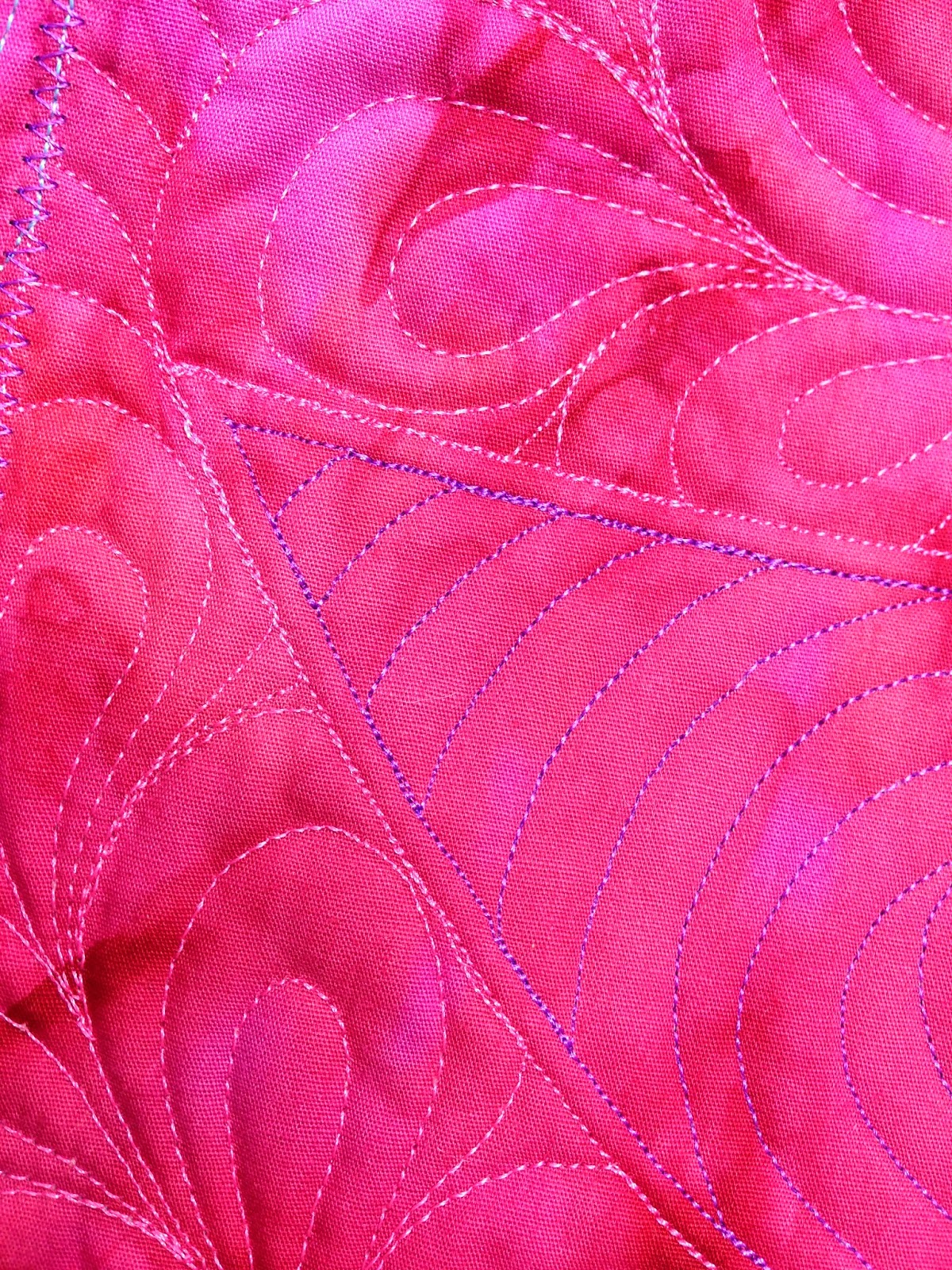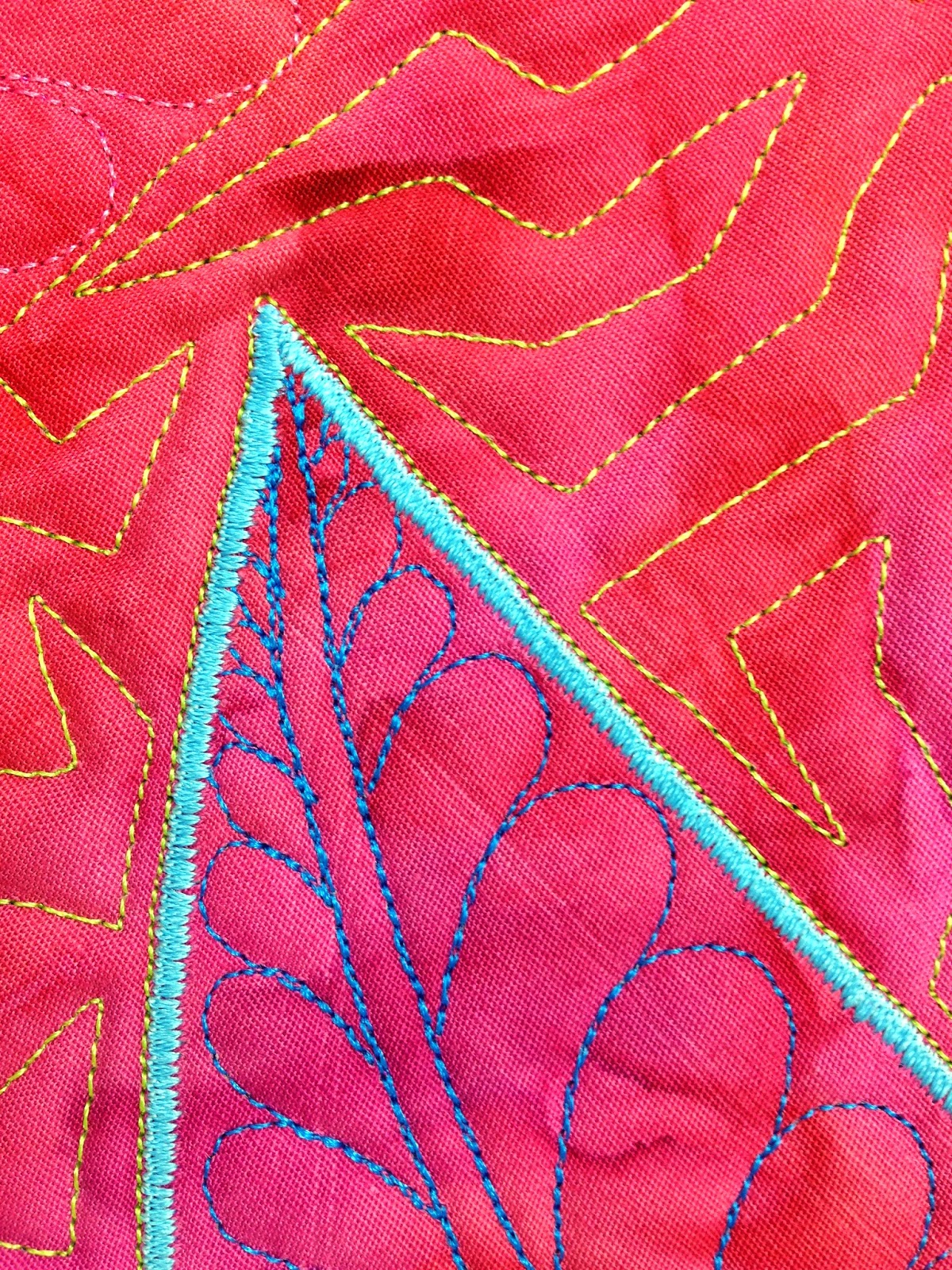Satin Stitching Snag
Here’s the deal: my over-complicating nature has flexed her wings and discovered that there are two ways to do machine applique satin stitch:
1 – Satin stitch the block – This requires stabilizer, but with a little practice you can produce some nice looking satin stitching over the edges of your applique. When quilted, you’ll stitch on either side of the satin stitching, which will leave a gap like this on the back:
2 – Satin stitch the quilt – This does not require stabilizer because once the quilt is basted with backing and batting, those extra layers stabilize the satin stitching enough. This feels a little more challenging because everything is squishy because of the batting.
The thing I’m obsessing about is the satin stitching also will obviously show on the back. I know, I know – the back is the BACK, but would this bug you?
Of course, I’ve already stitched two of mine one way…and now reconsider my decision. Argh!
Let’s go quilt,
Leah



It is just a different design element for the back, and, you did do it on purpose, right? It is what you planned. :-). Your work is gorgeous, just continue on and complete it. It is another well thought out design element and each gives the back a separate and unique look. Sincerely, Paula K.
I am only learning to do satin stitch. So far I am not at a stage where I like the look of the satin stitch on the back. So if it is done in the quilting stage I do not like my finished project. If the stitching really matched the backing I suppose you could get away with it.
I don't see a problem with stitching the block and quilting on both sides of the satin stitching. I don't see a gap, but a design line. I'm afraid satin stitching through everything might be more troublesome (and use more thread).
I think #2 would bother me and for those of us just learning the squishy quilt may be a problem .I prefer #1
I agree with curious. Your work is beautiful and high quality. Your satin stitch is tight and straight. the point is crisp. I actually prefer example #2. If the workmanship was a little less crisp, I wouldn't risk a quilt. Where you do such careful work, I think it adds a really interesting element on the back.
I must admit I like number 1 – I quite like the double straight lines around the leaf shape. I think the satin stitch over the backing looks a little heavy.
It would bug me to see satin stitching on the back. I have not needed to use stabilizer when satin stitching applique because the thickness of the fusible web usually does the stabilizing for me. But I think learning how to use stabilizer is a valuable skill, one that I and your participants would love to learn!